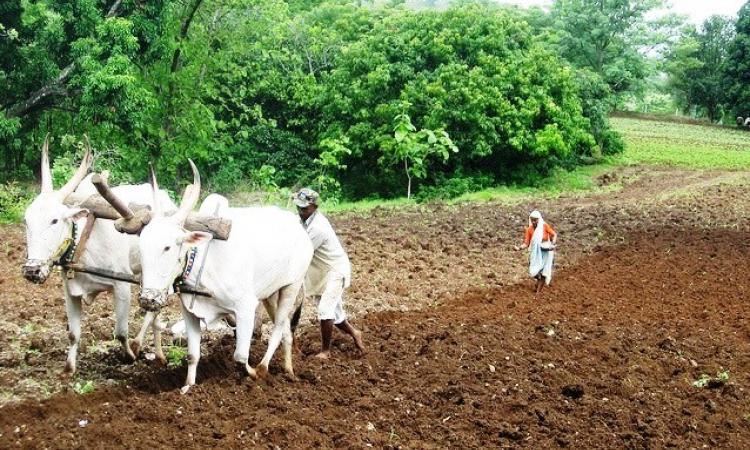
Over the last few months, we saw protests by distressed farmers of Maharashtra, Madhya Pradesh and other states over farming crisis and farmer suicides. In what seemed like a knee-jerk reaction, many state governments announced farm loan waivers without thinking if it would actually help the farmers.
Are loan waivers enough to improve the situation of farmers? Experts think otherwise. They believe that certain core issues of farming have been left unaddressed and need urgent consideration.
What do farmers have to say about the increasing crisis in agriculture and rising suicides? This article titled Lives in debt: Narratives of agrarian distress and farmer suicides published in the Economic and Political Weekly discusses the findings of a study on farmers’ experiences from two districts with high suicide rates in the country--Yavatmal in Maharashtra and Sangrur in Punjab.
The article argues that farmer suicides need to be understood in the context of the broader crisis in agriculture. It is not only indebtedness but a number of core issues related to faulty agricultural policies and practices that contribute to the distress among farmers.
Glaring signs of the crisis in agriculture
- The contribution of the agricultural sector to India’s GDP has been declining steadily. Nearly half of the workforce in the country, however, is involved in farming.
- There has been a steady increase in the percentage of farmers having small landholdings. Small landholdings do not support mechanisation and irrigation. Moreover, the absence of land records in many cases prevent these farmers from accessing formal credit, government benefits or crop insurance.
- A large number of small farm holders are accessing credit mainly from informal sources.
- Indebtedness among farmers is on the rise with 52 percent of agricultural households in the country being plagued by it.
What causes distress among farmers in Yavatmal and Sangrur?
Although Yavatmal and Sangrur are very different in terms of socioeconomic backgrounds, crop patterns, agricultural practices, the underlying reasons for distress are found to be similar.
- Flawed cropping patterns aggravating water scarcity
In Sangrur and Yavatmal, where paddy and cotton are grown, the crop choice is not harmonious with the agroclimatic features of the region. BT cotton is very sensitive to the timing and intensity of rainfall. Growing it in Yavatmal that has unpredictable rainfall and no alternative source of irrigation is unsuitable for the region.
As much as 2,000–4,000 litres of water are required to produce one kilo of rice. The high water demand makes rice unsuitable for a place like Sangrur which is highly water stressed with falling water tables due to severe depletion of groundwater resources.
- Rising input costs
Farmers in both regions complain of rising input prices (seed, water, electricity, fertiliser, pesticide and land rent) and the absence of a proportionate increase in minimum support prices (MSP). In Yavatmal, BT cotton producers are barely able to meet the costs of production, while traders and middlemen make profits at the cost of farmers who are not able to store the harvest and wait for the right price. Farmers in the study question the instability of prices and demand an enhancement of the loan amount from formal credit sources so that they can cover input costs and make farming viable.
In Sangrur, in addition to the high input prices needed for farming, dependence on paddy cultivation increases the demand for water, forcing farmers to spend huge amounts on digging borewells in an area that suffers from severe depletion of groundwater resources.
- The unending cycle of borrowing, non-repayment and the shame of debt
Rising input costs force farmers to borrow. Since the bank loans are insufficient to meet these high input costs, farmers are compelled to access informal sources of credit. At times, farmers prioritise repayment of loans taken from informal sources over bank loans due to high rates of interest and to retain their rapport with the moneylender to remain credit-worthy. Also borrowing from different sources to repay bank loans to stay within the banking system further pushes farmers into the spiral of debt. This, coupled with crop failure, worsens their situation.
At times, farmers are forced to borrow from their close relatives when other avenues of borrowing such as moneylenders have been tried and exhausted. The shame associated with one’s inability to repay is immense in village society and it is worse if money is borrowed from relatives, which forces many farmers to commit suicide.
- Rising aspirations and absence of alternative sources of income
Recently, rising aspirations have also led to farmers taking huge loans for non-farming activities such as marriages, ceremonies, cars, gadgets, contributing to their financial burden as many do not have any other source of income.
What is the way out?
The article suggests some fundamental changes to alter the situation.
- Moving towards cropping patterns that are suitable for the agro-climatic zones and encouraging indigenous patterns of farming that are less cost intensive.
- Modifying the institutional credit disbursal system by introducing the option of repayment in instalments.
- Introducing a proportionate loan–land ratio which would enable the farmer to retain his rights for the rest of his landholdings, which can then be used as a source of liquidity.
- Introducing specific farming credit policies for dryland and rainfed areas.
- The introduction of cashless loan components to avoid diversion of crop loans towards non-farm expenditures.
- Restructuring of loans against localised crop failures where specific and targeted compensation packages take extreme weather events or natural calamities into account.
- Introducing land reforms, correcting the terms of trade that work against farmers and providing them with alternative sources of livelihoods.
A copy of the paper can be downloaded from below: